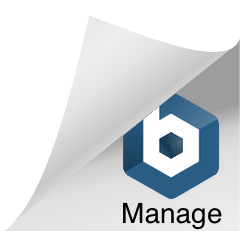Journey to the Kingdom of Wonder, Part II
A comprehensive look at a comprehensive pandemic travel experience involving comprehensive document checks.
Preamble
Welcome back to my series documenting my journey to the Kingdom of Wonder. Having already gone through the required documentation just to undertake this business trip, in this post I’ll detail what it was now like to make an international journey in these uncertain times.
LAX-SFO
I had some issues checking in for my flight digitally, and those issues were extended to the kiosk at the airport in Los Angeles. An agent needed to look over my documents in order to print all of my boarding passes, in what would be a prelude for the series of document checks to come.
Once that was over, I headed through a pretty empty Terminal 7 TSA PreCheck line to the United Club. The lounge was pretty empty, and the immediate thing I noticed on my first visit since the onset of the pandemic was the plexiglass that had been installed everywhere. This is one of the more recently built lounges in the network, and I holed up in one of its private phone booth rooms so that I could safely take my mask off and drink some water. United did a good job of supplying plenty of hand sanitizer throughout the lounge. This once bustling hub was a pretty sad scene on the whole, but I was thankful to be away from a crowd.

For the first of many times, I was paged at my gate for a document check. The agent looked over my visa and Covid-19 test results. He told me he had come across many folks who lacked the necessary documents to travel to various countries, given the strengthened rules in play.
Social distancing regulations were not well followed by the passengers in the boarding area. The flight itself was about three-quarters full. My first class upgrade cleared about 24 hours out, which provided me some extra distance from passengers – especially during the boarding process. A lady in front of me got reprimanded for bringing a homemade mimosa on board (#firstclassproblems) and sipping it with her mask off, but otherwise the process was pretty orderly.
The flight attendants handed out cleaning wipes for wiping down the seat area, which seemed fairly clean all things considered. Snack packs consisting of a bottle of water, pretzels and a cookie were handed out in lieu of a food or drink service.
While United seemed to be doing their level best to ensure a clean environment, many passengers seemed to struggle with the mask wearing requirements – either wearing them improperly or complaining about having to wear them. Given that your safety protocols are only as strong as your weakest link, and the weakest link is clearly selfish passengers, I’d probably continue to avoid flying domestically in the US any time soon.
SFO-ICN
Most of United’s San Francisco terminal was closed, including most food and shopping options. Of the four on site, only one United Club was open, and that just had too many people inside. While I understand United’s need for cash conservation, I do question their strategy to keep the Polaris Lounge closed, as even at a limited level of operation, it would enable the airline’s most loyal customers to have safety of mind in being able to socially distance between flights.
SFO in general was less populated than usual, especially in the international terminal, so it wasn’t worth hanging around the busy United Club.
I was paged again at the gate, this time for a more intensive document check: the agent looked over not only my visa and medical results but also my business invitation letter and validation certificate of payment guarantee. Having satisfied the requirements from the agent, he noted these are “crazy times.”
This flight was probably 75% empty, and consisted almost solely of Korean nationals, as very few passengers had to fill out the South Korea quarantine forms being required of visiting passengers at the gate. Apart from a handful of people connecting to Taiwan, I was the only connecting passenger, so it was kind of unclear why I needed to complete a form agreeing to a quarantine in South Korea.
Finally, before boarding, there was a temperature check at the top of the boarding lane. Upon reaching the end of the lane, customers were asked to pull their masks down for a facial scan.
I had debated boarding last, but being exhausted, decided to board first, and was rewarded. United boarded the 787 via door 2, and with me being seated in row 1 (meaning I would turn to the left and walk to the final row), I didn’t have to come into contact with any passengers, and no one passed my row.
This was an extremely uneventful flight, staffed by highly professional flight attendants. With my upgrade clearing to a lie-flat seat, and having changed my internal clock to Cambodia time ahead of the trip, I slept for most of the 12 and a half hours to Seoul.
ICN
Incoming international transit passengers and quarantining passengers with a final destination of South Korea funneled through the same single file line on arrival. This was a bit of a mess and really puts tight connections at risk – I had a connecting time of about 90 minutes.
Passengers have to fill out a yellow quarantine form even if they are in transit. This probably cost me 10 to 15 minutes in line, since United’s flight staff was not aware of the policy and therefore did not supply these health forms to anyone on board who indicated they were in transit. I couldn’t be too disappointed about that, however, because it’s incredibly difficult for staff to understand the constantly changing regulations. It’s important to be thankful for the flight staff that are putting themselves in the firing line of a global pandemic every day.
Upon reaching the end of the line, airport agents checked over my transit documents and performed a temperature check at around neck level. From there, I peeled off from the immigration line to head through transfer security, which was much faster than usual owing to the extremely limited number of connecting passengers. It was shocking to then exit back into the departure terminal to see one of the busiest airports in the world almost completely desolate.

I arrived at the gate to get a second document check, and a sticker applied to my boarding pass allowing me to board. The gate agent had some trouble understanding my Covid-19 test results, and required me to point out the names of the doctor and hospital where the test was taken, before allowing me to proceed.
For the third time in three flights I got paged at the gate, this time with a handmade sign on printer paper. The gate staff had me then go all the way back to a transfer desk in the middle of the terminal for my third document check at ICN alone (and fifth total). The Asiana agent at this counter was extremely confused by Cambodia’s protocols, and kept asking if I had the $2000 deposit required to enter Cambodia. By this point, I was sweating heavily from running up and down the airport and a little worried I might miss the flight. I managed to explain a few times that the purpose of the validation certificate of payment guarantee was to replace that deposit. After this, I managed to make it all the way back to the gate for a final boarding pass check and another temperature check.
All in all, I can say I was thankful for Asiana’s robust document checks and temperature checks, although their guidelines on social distancing left quite a lot to be desired.
ICN-PNH
The flight to Phnom Penh itself was around 100% capacity. It’s fair to say there weren’t many distancing protocols in place in the gate area, with a long tight queue snaking on to a single aisle plane. I didn’t manage to qualify for an upgrade on this flight, so was left in the fully six-across economy section. Asiana flies an extremely high density, low frills A321 on this route, and there wasn’t a lot in terms of in flight entertainment on the 5 hour journey down to Phnom Penh.

That all being said – the confidence from passengers following protocols was far higher on this flight than on my LAX-SFO segment. On a route originating in a society where mask wearing was already normal before the pandemic, people keeping their masks on isn’t something you have to worry about. In fact, many folks also wore face visors on top of their mask, and a group of about 25 passengers all came on the plane in white hazmat boiler suits. The flight attendants also wore strange white bags on top of their uniforms. All of the passengers in my row were very respectful, and took it in turns to unmask when meals were served.
I do feel, however, that given the full nature of the flight and the incredible number of large jets parked at ICN, Asiana could be flying a twin aisle aircraft on this route, or flying the route every day instead of 4x/week. I appreciate this route is probably a rare money-maker in a time of airlines making extreme losses. But as a passenger, I would also appreciate the social distancing opportunities that other airlines are providing.
Asiana provided more Cambodia entry forms than usual on the plane. The normal customs and immigration documents were handed out, and also a health document requiring largely the same information.
With a clutch of these documents in hand, plus all of the letters, forms and identification required to make the journey, we landed at Phnom Penh. While I was in some way prepared in writing for what would come next, at the end of this 26 hour journey, really nothing could have made me truly ready. The story of all of that will have to wait for the next post.



